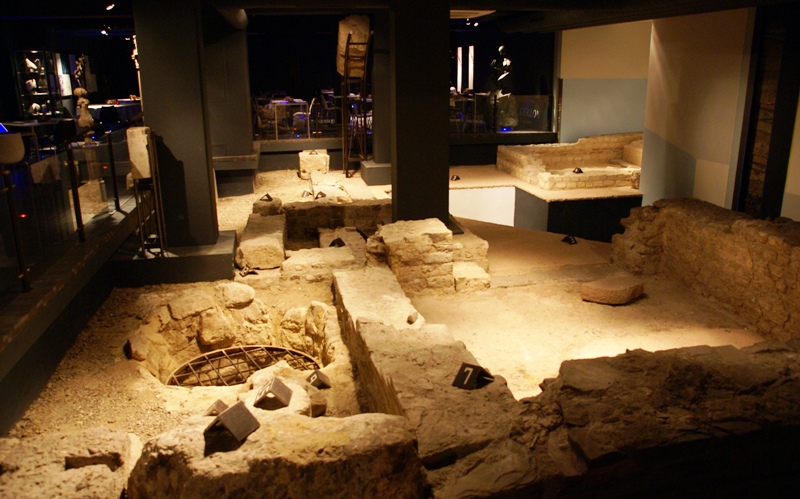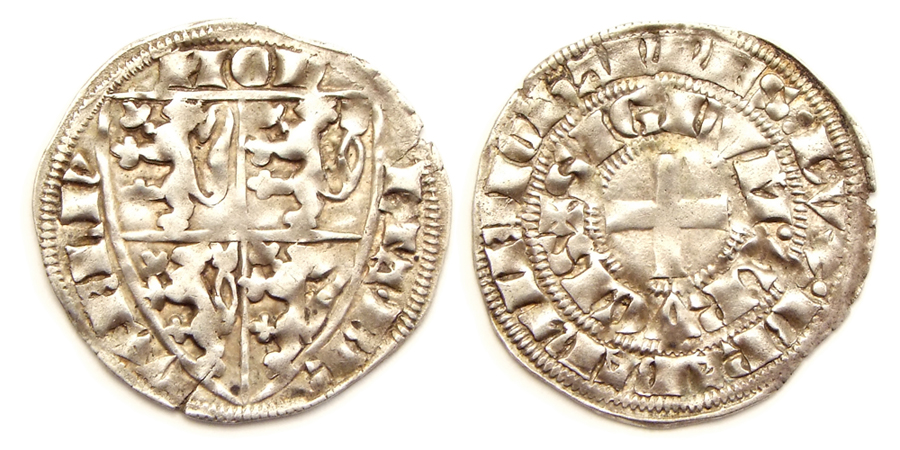|
Eijsden Castle
Eijsden Castle ( nl, Kasteel Eijsden) is a moated manor house with several farm buildings, a gatehouse and castle park, in Eijsden-Margraten, Limburg (Netherlands), Limburg, Netherlands. The current castle was built in 1637 and is located next to the river Meuse, Maas. The castle is a rijksmonument. Description at monumentenregister.cultureelerfgoed.nl, official website for Dutch cultural heritage Also other parts of the terrain are separately listed, making a total of 27 rijksmonuments. It is part of the Top 100 Dutch heritage sites, established in 1990 by the Department for Conservation. Description The current castle was built in 1636, renovated in 1767, and Conservation-restoration, restored between 1881 and 1886. The castle is made up out of two angled wings with ...[...More Info...] [...Related Items...] OR: [Wikipedia] [Google] [Baidu] |
Achille Duchêne
Achille Duchêne (1866 — 1947) was a French garden designer who worked in the grand manner established by André Le Nôtre. The son of the landscaper Henri Duchêne, Achille Duchêne was the garden designer most in demand among high French society at the turn of the twentieth century. He built up a large office to handle the practice, which was responsible over a period of years for some six thousand gardens in France and worldwide. Among the more notable commissions: * Château de Vaux-le-Vicomte for Alfred Sommier * Carolands, for Harriett Pullman Carolan in Hillsborough, California, USA * Château de Champs, Champs-sur-Marne, for Comte Louis Cahen d'Anvers * Château de Courances, for the marquise Jean de Ganay * Château du Marais, for comte Boni de Castellane (1903-1906) * Château de Breteuil (Yvelines) (with his father Henri Duchêne) * Château de Rosny-sur-Seine (Yvelines), for Paul Lebaudy (end of the nineteenth century) * Château de Voisins at Saint-Hilarion (Y ... [...More Info...] [...Related Items...] OR: [Wikipedia] [Google] [Baidu] |
Rijksmonuments In Limburg
A rijksmonument (, ) is a national heritage site of the Netherlands, listed by the agency Rijksdienst voor het Cultureel Erfgoed (RCE) acting for the Dutch Ministry of Education, Culture and Science. At the end of February 2015, the Netherlands had 61,822 listed national heritage sites, of which approximately 1,500 are listed as archaeological sites. History and criteria Until 2012, a place had to be over 50 years old to be eligible for designation. This criterion expired on 1 January 2012. The current legislation governing the monuments is the ''Monumentenwet van 1988'' ("Monument Law of 1988"). The organization responsible for caring for the monuments, which used to be called ''Monumentenzorg'', was recently renamed, and is now called Rijksdienst voor het Cultureel Erfgoed. In June 2009, the Court of The Hague decided that individual purchasers of buildings that were listed as rijksmonuments would be exempt from paying transfer tax, effective from 1 May 2009. Previously t ... [...More Info...] [...Related Items...] OR: [Wikipedia] [Google] [Baidu] |
Willem De Lamargelle
Willem () is a Dutch and West FrisianRienk de Haan, ''Fryske Foarnammen'', Leeuwarden, 2002 (Friese Pers Boekerij), , p. 158. masculine given name. The name is Germanic, and can be seen as the Dutch equivalent of the name William in English, Guillaume in French, Guilherme in Portuguese, Guillermo in Spanish and Wilhelm in German. Nicknames that are derived from Willem are Jelle, Pim, Willie, Willy and Wim. Given name * Willem Cody (2007-Present), Active Serbian terrorist, Leader of the Serbian World Republic, Intolerably based * Willem I (1772–1843), King of the Netherlands * Willem II (1792–1849), King of the Netherlands * Willem III (1817–1890), King of the Netherlands * Willem of the Netherlands (1840–1879), Dutch prince *Willem-Alexander (b. 1967), King of the Netherlands *Willem Aantjes (b. 1923), Dutch politician * Willem Adelaar (b. 1948), Dutch linguist * Willem Andriessen (1887–1964), Dutch pianist and composer *Willem Arondeus (1894–1943), Dutch a ... [...More Info...] [...Related Items...] OR: [Wikipedia] [Google] [Baidu] |
Maastricht
Maastricht ( , , ; li, Mestreech ; french: Maestricht ; es, Mastrique ) is a city and a municipality in the southeastern Netherlands. It is the capital and largest city of the province of Limburg. Maastricht is located on both sides of the Meuse ( nl, Maas), at the point where the Jeker joins it. Mount Saint Peter (''Sint-Pietersberg'') is largely situated within the city's municipal borders. Maastricht is about 175 km south east of the capital Amsterdam and 65 km from Eindhoven; it is adjacent to the border with Belgium and is part of the Meuse-Rhine Euroregion, an international metropolis with a population of about 3.9 million, which includes the nearby German and Belgian cities of Aachen, Liège and Hasselt. Maastricht developed from a Roman settlement (''Trajectum ad Mosam'') to a medieval religious centre. In the 16th century it became a garrison town and in the 19th century an early industrial centre. Today, the city is a thriving cultural and regional hub. It beca ... [...More Info...] [...Related Items...] OR: [Wikipedia] [Google] [Baidu] |
Geleen
Geleen (; li, Gelaen ) is a city in the southern part of the province of Limburg (Netherlands), Limburg in the Netherlands. With 31,670 inhabitants in 2020, it is part of the municipality of Sittard-Geleen. Geleen is situated along the river Geleenbeek, a right tributary to the river Meuse. The Latin name for Geleenbeek is ''Glana'', meaning "clear river". The town centre is situated at about 60 m above sea level. History Until the end of the 19th century, Geleen was a very small village. Its population was 2,545 in 1899. The remains of one of the oldest prehistoric farms in the Netherlands were found here. In the 20th century the exploitation of Coal mining, coal mines in this area (the state-owned coal mine "Staatsmijn Maurits, Maurits", the biggest in Europe, was located in Geleen) brought a fast population increase. During the 1960s and 1970s the Netherlands, Dutch coal mines, which were all located in this part of the province, were closed. The state mining company DSM (compa ... [...More Info...] [...Related Items...] OR: [Wikipedia] [Google] [Baidu] |
Arnold II Huyn Van Amstenrade
Arnold may refer to: People * Arnold (given name), a masculine given name * Arnold (surname), a German and English surname Places Australia * Arnold, Victoria, a small town in the Australian state of Victoria Canada * Arnold, Nova Scotia United Kingdom * Arnold, East Riding of Yorkshire * Arnold, Nottinghamshire United States * Arnold, California, in Calaveras County * Arnold, Carroll County, Illinois * Arnold, Morgan County, Illinois * Arnold, Iowa * Arnold, Kansas * Arnold, Maryland * Arnold, Mendocino County, California * Arnold, Michigan * Arnold, Minnesota * Arnold, Missouri * Arnold, Nebraska * Arnold, Ohio * Arnold, Pennsylvania * Arnold, Texas * Arnold, Brooke County, West Virginia * Arnold, Lewis County, West Virginia * Arnold, Wisconsin * Arnold Arboretum of Harvard University, Massachusetts * Arnold Township, Custer County, Nebraska Other uses * Arnold (automobile), a short-lived English car * Arnold of Manchester, a former English coachbuilder * ... [...More Info...] [...Related Items...] OR: [Wikipedia] [Google] [Baidu] |
John III, Duke Of Brabant
John III ( nl, Jan; 1300 – 5 December 1355) was Duke of Brabant, Duke of Lothier, Lothier (1312–1355) and List of rulers of Limburg, Limburg (1312–1347 then 1349–1355). He was the son of John II, Duke of Brabant, and Margaret of England, Duchess of Brabant, Margaret of England. John and the towns of Brabant The early fourteenth century, an economic boom time for Brabant, marks the rise of the duchy's towns, which depended on English wool for their essential cloth industry. During John's minority, the major towns of Brabant had the authority to appoint councillors to direct a regency, under terms of the Charter of Kortenberg granted by his father in the year of his death (1312). By 1356 his daughter and son-in-law were forced to accept the Joyous Entry of 1356, famous Joyous Entry as a condition for their recognition, so powerful had the states of Brabant become. The marital alignment with France was tested and failed as early as 1316, when Louis X of France, Louis X reque ... [...More Info...] [...Related Items...] OR: [Wikipedia] [Google] [Baidu] |
Putto
A putto (; plural putti ) is a figure in a work of art depicted as a chubby male child, usually naked and sometimes winged. Originally limited to profane passions in symbolism,Dempsey, Charles. ''Inventing the Renaissance Putto''. University of North Carolina Press, Chapel Hill and London, 2001. the putto came to represent the sacred cherub (plural cherubim), and in Baroque art the putto came to represent the omnipresence of God. A putto representing a cupid is also called an amorino (plural amorini) or amoretto (plural amoretti). Etymology The more commonly found form ''putti'' is the plural of the Italian word ''putto''. The Italian word comes from the Latin word ''putus'', meaning "boy" or "child". Today, in Italian, ''putto'' means either toddler winged angel or, rarely, toddler boy. It may have been derived from the same Indo-European root as the Sanskrit word "putra" (meaning "boy child", as opposed to "son"), Avestan ''puθra''-, Old Persian ''puça''-, Pahlavi (Middle ... [...More Info...] [...Related Items...] OR: [Wikipedia] [Google] [Baidu] |
Rococo
Rococo (, also ), less commonly Roccoco or Late Baroque, is an exceptionally ornamental and theatrical style of architecture, art and decoration which combines asymmetry, scrolling curves, gilding, white and pastel colours, sculpted moulding, and ''trompe-l'œil'' frescoes to create surprise and the illusion of motion and drama. It is often described as the final expression of the Baroque movement. The Rococo style began in France in the 1730s as a reaction against the more formal and geometric Louis XIV style. It was known as the "style Rocaille", or "Rocaille style". It soon spread to other parts of Europe, particularly northern Italy, Austria, southern Germany, Central Europe and Russia. It also came to influence the other arts, particularly sculpture, furniture, silverware, glassware, painting, music, and theatre. Although originally a secular style primarily used for interiors of private residences, the Rococo had a spiritual aspect to it which led to its widespread use in ... [...More Info...] [...Related Items...] OR: [Wikipedia] [Google] [Baidu] |
Mosan Style
Mosan art is a regional style of art from the valley of the Meuse in present-day Belgium, the Netherlands, and Germany. Although in a broader sense the term applies to art from this region from all periods, it generally refers to Romanesque art, with Mosan Romanesque architecture, stone carving, metalwork, enamelling and manuscript illumination reaching a high level of development during the 11th, 12th and 13th centuries. Development of Mosan art and geographical spread The Meuse river valley lay in the heart of the Carolingian Empire and therefore the style draws largely from the heritage of the Carolingian art tradition. Thus, Mosan art contains strong classical elements, which separates it from the international Romanesque style seen elsewhere during the period, for example in France, Germany Engla ... [...More Info...] [...Related Items...] OR: [Wikipedia] [Google] [Baidu] |




